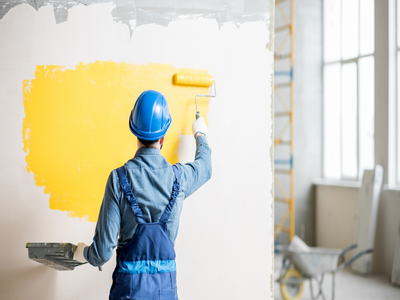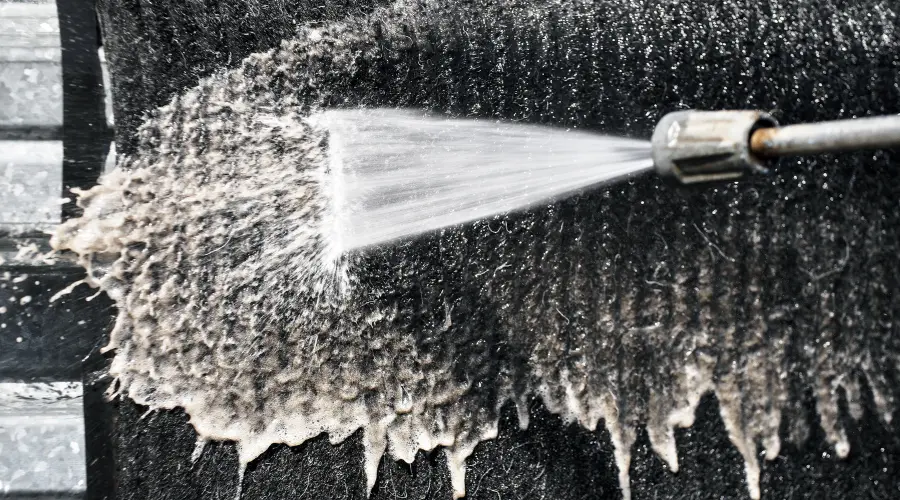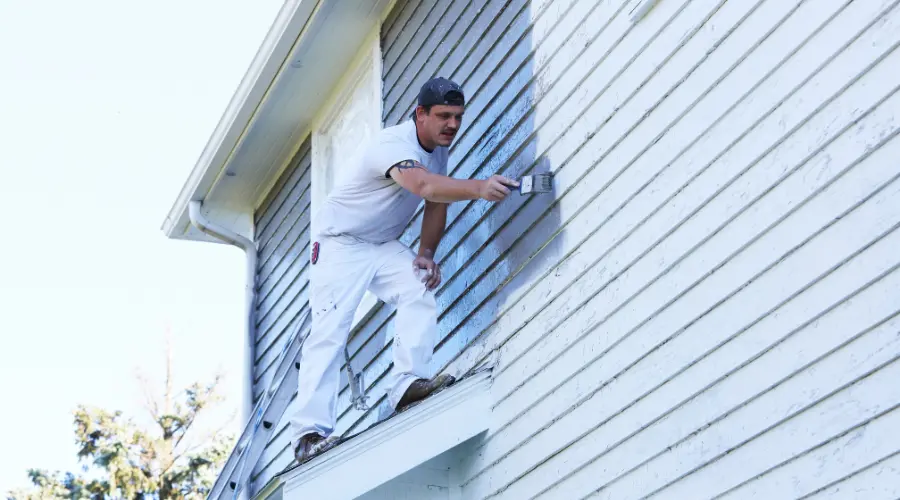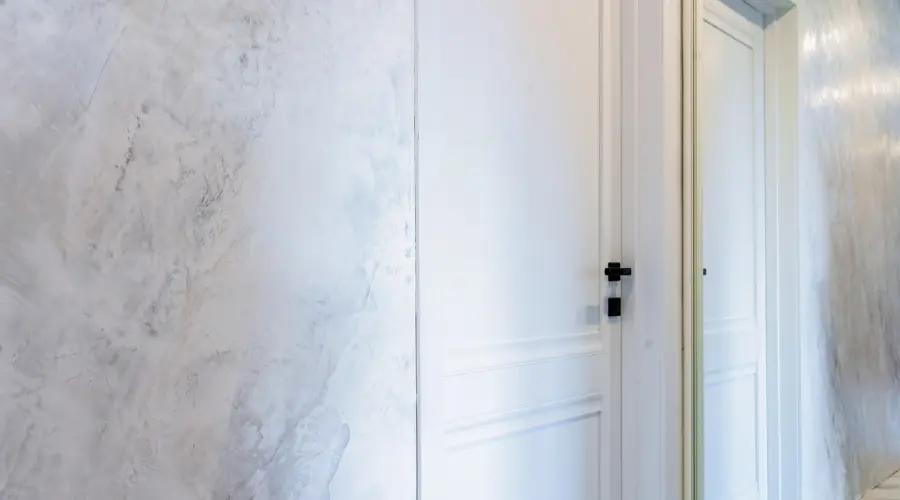Key Takeaway:
- A fresh coat of paint not only revitalizes the look of your home but also provides essential protection for your walls.
- Understanding the lifespan of different paints, recognizing signs of deterioration, and following proper storage and disposal practices can extend the life of your paint job.
- Whether you’re maintaining your current walls or starting a new project, investing in high-quality materials and expert craftsmanship, such as with CCT Apex House Painting, ensures long-lasting beauty and durability for your living spaces.
When transforming the ambience of your spaces, a fresh coat of paint can work wonders. The colour palette you choose reflects your personality while also serving as a protective layer for your walls. However, have you ever wondered about the lifespan of that vibrant hue you carefully selected? In this blog post, we’ll delve into the intricacies of paint longevity, identifying when it’s time for a refresh and essential tips for handling and storing paint.
Lifespan of Paint: A Canvas of Durability
The longevity of paint depends on various factors, including the quality of the paint, the surface it covers, and the environmental conditions it faces. Generally, high-quality paints can last anywhere from 5 to 10 years or more, while lower-quality paints may require more frequent touch-ups.
Revitalize Your Living Space with CCT Apex House Painting
If you’re considering a painting project, trust CCT Apex House Painting for a vibrant and lasting finish that will enhance your space and provide enduring protection for your walls.
Factors Affecting Paint Longevity
1. Quality of Paint:
Higher-quality paints contain better ingredients that improve adhesion and durability. They often come with advanced formulations that resist fading, cracking, and peeling.
2. Surface Preparation:
Properly preparing the surface before painting is critical. This includes cleaning, sanding, and priming as necessary to ensure the paint adheres well and lasts longer.
3. Environmental Conditions:
Paint longevity can be significantly impacted by exposure to conditions. Exterior paints face harsher elements—such as sunlight, rain, and wind—leading to a shorter lifespan than interior paints, which are typically more protected.
4. Paint Type:
The type of paint used can also influence its durability. For example, water-based latex paints tend to be more flexible and less prone to cracking than oil-based paints, making them ideal for many interior applications.
The Lifespan Breakdown
- Interior Latex Paint: 5 to 10 years
- Interior Oil-Based Paint: 10 to 15 years
- Exterior Latex Paint: 5 to 7 years (less in extreme climates)
- Exterior Oil-Based Paint: 7 to 10 years
To ensure the longevity of your paint job, it’s crucial to invest in quality paint products and follow proper application techniques. Surface preparation, priming, and using the correct type of paint for each surface contribute to the overall durability of the paint.
Signs of Bad Paint: Cracks, Fades, and Bubbles
Identifying when to bid farewell to your current paint job involves recognizing signs of deterioration. If you notice cracks, peeling, fading, or the formation of bubbles on your walls, it’s a clear indication that the paint has reached the end of its lifespan.
Common Signs of Deterioration
- Cracking: Fine cracks in the paint can appear due to age, humidity changes, or improper application.
- Peeling: This often occurs when paint loses adhesion to the surface. It can result from moisture, poor surface preparation, or low-quality paint.
- Fading: Exposure to sunlight can cause colours to fade over time, particularly in rooms with large windows or heavy sunlight exposure.
- Bubbling: Bubbling or blistering indicates moisture trapped beneath the paint film. This often requires immediate attention to prevent further damage.
- Mold and Mildew: Growth on painted surfaces can compromise the paint’s integrity and indicate underlying moisture issues.
Proactive Measures
Regular inspections of your painted surfaces allow you to catch these issues early on and address them before they escalate. Taking proactive measures can extend the life of your paint and protect your walls from further damage. For example, if you notice signs of moisture, address the source of the problem before repainting to prevent recurrence.
Mixing Old Paint: The Palette of Practicality
It’s common to find cans of leftover paint stashed in the garage or basement. The question arises: Is it okay to mix old paint with new paint for touch-ups or a completely new project? The answer is a cautious yes, but several considerations must be remembered.
Considerations for Mixing Paint
1. Check for Deterioration: Before mixing old paint with new, ensure that the old paint hasn’t deteriorated. Look for signs of lumps, a foul odour, or significant separation.
2. Same Type and Finish: Only mix paints of the same type (latex with latex, oil with oil) and finish (matte with matte, gloss with gloss) to avoid unexpected results.
3. Test Before Committing: Before using the mixed paint on your walls, test it on a small, inconspicuous area. This ensures that the colour and texture match what you expect.
Benefits of Mixing Old Paint
Mixing old paint can be a cost-effective solution for touch-ups or smaller projects. It helps reduce waste and allows you to use materials you already have.
Disposing of Old Paint: An Eco-Friendly Palette Cleanup
Responsible disposal is crucial when it’s time to bid farewell to old paint cans. Improper disposal can harm the environment and pose health risks. Many local recycling centres or hazardous waste facilities accept old paint cans, so it’s essential to check with your municipality for guidelines on paint disposal.
How to Dispose of Different Paint Types
- Latex Paint: For latex paint, dry it first by leaving the can open in a well-ventilated area. Once dry, you can dispose of it with regular household trash.
- Oil-Based Paint: Oil-based paints are considered hazardous waste and should be taken to a designated facility. Many municipalities have special days for hazardous waste disposal.
- Empty Cans: These can typically be recycled if you have entirely emptied paint cans. Check your local recycling guidelines for details.
Paint Tips Leftover: A Stroke of Wisdom
Unused paint can serve as a valuable resource for touch-ups and minor projects. To maximize its lifespan, proper storage is essential.
How to Store Leftover Paint
1. Tightly Seal the Can: Ensure the can is tightly sealed to prevent air exposure, which can cause the paint to dry out.
2. Cool, Dry Place: Store paint in a cool, dry place away from extreme temperatures. Avoid areas like garages that can experience high heat or freezing conditions.
3. Label the Can: Label the paint can with the date, room, and colour used to make future touch-ups more straightforward. This organization prevents confusion and ensures you achieve a seamless finish.
4. Regular Checks: Periodically check the paint for signs of deterioration, such as an unpleasant odour or changes in texture. If the paint has gone wrong, dispose of it responsibly.
Preparing for Future Projects
Before reusing leftover paint, stir it thoroughly and test it on a small area to ensure consistency. This can save you time and ensure that your finished project looks professional.
Safe Paint Storage: A Brush with Prudence
Storing paint in your home is generally safe, but following some basic guidelines is essential.
Best Practices for Safe Paint Storage
- Avoid Direct Sunlight: Avoid paint cans from direct sunlight and extreme temperature fluctuations. UV rays can break down paint over time.
- Store Upside Down: Storing paint cans upside down can help create a tight seal around the lid, preventing air from entering.
- Keep Away from Children and Pets: Ensure that paint is stored out of reach of children and pets to prevent accidental spills or ingestion.
- Ventilation: Store paint in a well-ventilated area to minimize potential odours.
Elevate Your Space with Stunning Textured Walls!
Discover how textured walls can add depth, style, and character to your interior design. Whether you want a bold statement or subtle elegance, textured walls are the perfect solution to enhance any room.
FAQs: Understanding the Lifespan of Paint
1. How often should I repaint my walls?
The frequency of repainting depends on several factors, including the quality of the paint, the room’s exposure to sunlight, and the type of paint used. Generally, interior walls may need repainting every 5 to 10 years, while high-traffic areas require more frequent touch-ups.
2. What are the signs that I need to repaint?
Common signs indicating it’s time to repaint include visible cracking, peeling, bubbling, fading, or mold and mildew. Regular inspections can help catch these issues early.
3. Can I use leftover paint for touch-ups?
Yes, leftover paint can be used for touch-ups, provided it has been properly stored and hasn’t deteriorated. Ensure the paint type and finish are the same as the original paint for the best results.
4. How should I store leftover paint?
To store leftover paint effectively, seal the can tightly, label it with relevant information, and keep it in a cool, dry place away from direct sunlight and extreme temperatures.
5. How do I dispose of old paint safely?
For latex paint, let it dry out and dispose of it with household trash. For oil-based paint, could you take it to?
Conclusion
In the grand canvas of home improvement, paint plays a pivotal role in defining the aesthetic and protecting your home’s foundation. Understanding the lifespan of paint, recognizing signs of deterioration, and employing proper storage and disposal practices ensures that your walls remain vibrant and well-maintained.
Whether embarking on a new painting project or simply touching up an existing masterpiece, a little knowledge about paint longevity can go a long way. So, embrace the transformative power of colour, and let your walls tell a story of endurance and beauty. After all, a well-maintained paint job is not just a visual delight; it’s a testament to the care and attention you invest in your living spaces.







